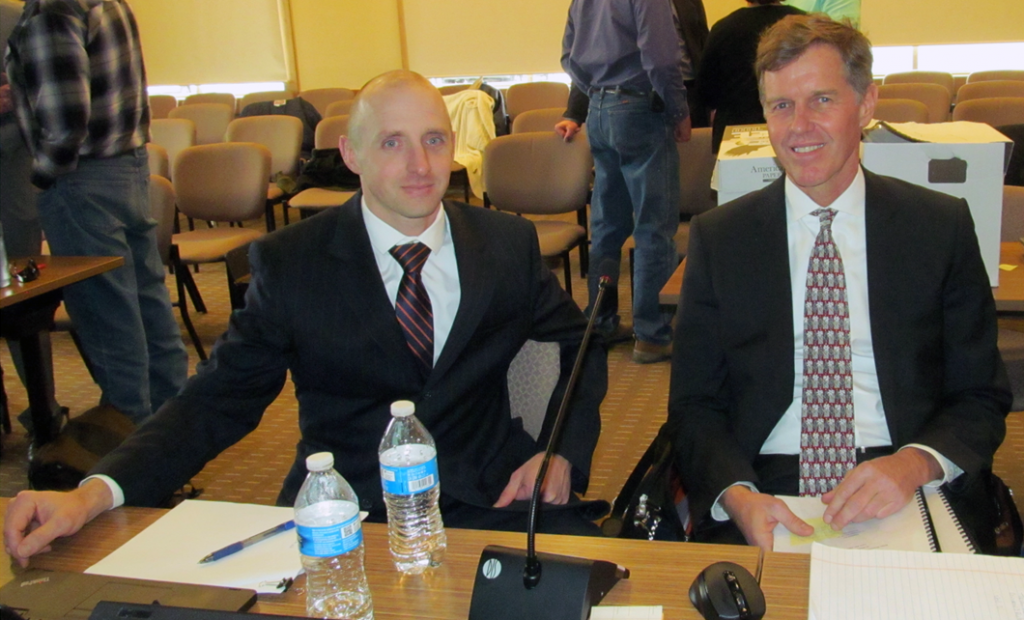Water rules trial begins third week

ALAMOSA — Engineer Gregory Sullivan, expert witness for the objectors, was on the stand as the Rio Grande Basin well rules trial entered its third and possibly final week on Monday.
Sullivan remains on the stand this morning. Chief District/Water Judge Pattie Swift is presiding over the trial over groundwater rules promulgated by the state engineer's office for the Rio Grande Basin (San Luis Valley.)
Much of Sullivan's testimony revolved around the Arroya Springs (also known as Diamond Springs) area in Conejos County, a point of contention for objectors who are concerned that the injuries they have sustained as surface water right owners as a result of well pumping are not addressed in the rules.
"They haven't even tried to model it," Sullivan responded to Rio Grande Water Users Association Attorney Bill Paddock during cross examination on Monday afternoon. "If they would have at least tried, we would be a lot farther along."
Sullivan said the clients he worked for had shared their concerns to the division engineer a number of times, "and they were basically rebuffed."
Paddock had asked Sullivan if observation wells and additional data would be helpful in understanding more about the hydrology of this area. Sullivan said although more information is always helpful, "I think that data is plenty sufficient to do the kind of modeling I am referring to … I don't think that's necessary to make a reasonable estimate of depletions by pumping on the springs."
He added, "I know the water level is below the springs, because it's not flowing."
Historical documents had recorded water flowing at Arroya Springs and related waterways as far back as 1889. Sullivan testified about where the water came from for the springs and related ditches and how much, with as much as 58 cubic feet per second at one time at Diamond Springs.
He made a site visit to the area in October of 2016 to see the Arroya/Diamond Springs area and the parcels irrigated by 2 J Ranches, his clients in this case and one of the remaining objectors to the rules at the beginning of the trial. Sullivan otherwise relied on data derived from reports, studies and data from the Colorado Division of Water Resources, primarily from Districts 21 and 22 in the Rio Grande Basin in the vicinity of the Arroya Springs area, which is in a topographic low for the whole region, he explained.
Sullivan referred to the increase in large capacity irrigation wells, with 700-750 confined aquifer wells installed between 1940 and 1969 and 2,100 unconfined aquifer wells installed during that same time period. He said although farmers used wells for irrigation out of necessity, they also used them for convenience — "water is there at a flip of the switch."
He testified to reduced flows from springs such as Arroya as a result of increased pumping and said resurrecting flows at the spring could occur through additional recharge or reduced pumping.
Testimony is still anticipated from farmers in the Arroya Springs area as well as rebuttal testimony from the state's witnesses.
Caption: Expert witness Gregory Sullivan, right, confers with 2 J Group’s attorney Kendall Burgemeister during the groundwater rules trial on Monday. Sullivan remains on the stand this morning.



